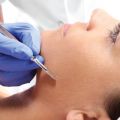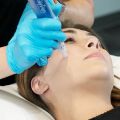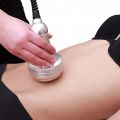1/7/2021
Skincare Benefits and Treatments of Dermaplaning

3/24/2021
Dermaplaning is a popular facial treatment providing instant gratification without the use of chemicals. It is a simple and safe technique used for exfoliating the skin while removing fine vellus hair, also called peach fuzz.
Using a small, modified surgical blade to gently but persistently scrape the epidermis surface with light, feathery strokes, the procedure leaves skin smooth and vibrant. Dermaplaning is often paired with a variety of additional treatments, such as light chemical peels and masks. Treatment pairing allows for deeper penetration of skincare products.
Preparing for Dermaplaning
- Discussion of medical history, skin type and skin coloring.
- If experiencing an active acne flare-up, appointment rescheduling may be required to avoid further irritating skin or tearing skin’s surface.
- Avoid direct sun exposure in the week prior to your appointment. Sun damage, such as sunburn, compromises skin and increases treatment painfulness.
Who is a Good Dermaplaning Candidate?
1.Dermaplaning is beneficial for almost any skin type, even candidates with extremely sensitive skin or rosacea.
2.Dermaplaning can be used on any skin type
- Acne scars
- Dull skin
- Dry skin
- Fine wrinkles
- Sun-damaged skin
3.Candidates with acne-prone skin should not be treated.
4.Fine facial hair known as vellus hair is necessary for the oil from the sebaceous glands to be excreted.
Is Dermaplaning Safe to Do at Home?
- Self-administering dermaplaning treatments may not yield desired results and yields some additional risks.
- The risk of infection, complications, and pain increases during at-home, do it yourself dermaplaning.
- An exfoliating tool used for dermaplaning is called a razor, an exfoliator, a beauty wand, or an exfoliation system.
How Often Can Dermaplaning Be Done?
- Dermaplaning removes about two to three weeks' worth of dead skin cells.
- Treatment can be done every 4 weeks.
- Allows the skin to complete its normal rejuvenation cycle before the treatment is done again.
Risks and Side Effects of Dermaplaning
- Dermaplaning is a low-risk procedure.
- Side effects may include slight facial redness in the hours following a treatment.
- Some people develop whiteheads on their skin in the day or two following dermaplaning.
Benefits of Regular Dermaplaning Treatments
1. Cellular Turnover Increase
- Regular dermaplaning removes dead skin cells faster, which helps train skin to shed them at an accelerated rate.
2. Reduced Scarring and Hyperpigmentation
- Hyperpigmentation, sun damage, and acne scarring is evident because the damage is contained within the first layers of the dermal tissue.
3. Fine Lines and Wrinkles Fading
- Wrinkles and fine lines are particularly prominent in top skin layers. Regular dermaplaning softens and minimizes aging symptoms and appearances.
4. Rejuvenated Glow
5. Annoying Peach Fuzz Removal
Is Dermaplaning Safe?
- Provided by trained and experienced medical aesthetics professionals, Dermaplaning is safe and poses no greater danger than shaving.
- Enjoy facial rejuvenation without the use of chemicals.
- Control superficial hyperpigmentation resulting from hormonal fluctuations that occur during and after pregnancy.
Naples and Fort Myers, Florida's Leader in Skin and Body Care Dermaplaning is the answer to those wishing to improve skin appearance or those seeking to address skin issues without undergoing invasive and expensive surgery.
Natalie's Skin Solutions is an aesthetic and laser center delivering clear and brighter-looking skin to clients in Fort Myers, Naples and the surrounding areas.
Natalie’s Skin Solutions Aesthetic & Laser Center Skin and Body Services
Natalie's Skin Solutions is an aesthetic and laser center delivering clear and brighter-looking skin to clients in Fort Myers, Naples and the surrounding areas.
Natalie’s Skin Solutions Aesthetic & Laser Center Skin and Body Services
- Beauty Enhancements
- Beauty Products
- Body Treatments
- Chemical Peels
- Facial Treatments
- Hair Treatments
Call Natalie's Skin Solutions Aesthetic & Laser Center at 239-936-SKIN(7546) or connect with us online today. We offer virtual consultations to new and existing clients at https://www.nataliesskinsolutions.com/video-consultation/.
Other articles and publications:
For most people, skin beauty is everything. Learn from Florida’s experts in skin and body care treatments, Natalie’s Skin Solutions Aesthetic & Laser Center uses one of the latest skincare treatments.
Learn HydraFacial benefits and how it works. Talk to specialists at Natalie's Skin Solutions to know whats the best treatment for you skin type. Call 239.936. SKIN (7546) today
9/13/2021
Ultrasonic Cavitation works by breaking down deep stubborn local fat tissues which are subsequently disposed of through the lymphatic and urinary systems.
4/27/2021
Skin for Life trademarked proprietary ingredient formulas are in a nutritional nano bio-emulsion sphere that delivers vitamins, minerals, and essential lipids to protect the skin’s immunity integrity.
8/19/2021
Another added benefit of BB Glow treatment resides in the serums, which are made form purely natural and potent Nutrients.
12/22/2020
Learn more about Obagi Nu-Derm System in Naples and Fort Myers, Fl best skin and body care treatments. Call us today at 239-936-754 for consultation.
6/15/2021







